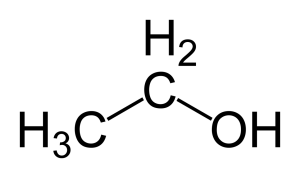Alcohol is responsible for acute poisoning, not always obvious, and simulate more conditions such as hypoglycemia or subarachnoid haemorrhage. The dosage of ethanol deserves to be asked more often.

Sample:
Venous blood collected on fluoride (as glucose); 20 mL of blood on two sealed vials (one being reserved against a possible second opinion), if forensic sample.
Caution: Do not clean the skin with alcohol, ether or iodine but with an antiseptic in aqueous solution.
Typical values:
BAC is zero in a subject not having absorbed alcohol.
Values <0.30 g / L (6.5 mmol / L) is considered normal in adults in our country.
Conversion Factors
= g × 21.7 mmol / L
mmol / L × 0.046 = g / L
Interpretation:
• Driving with a BAC> 0.50 g / L is an offense.
• The absorption of 1 L of table wine or equivalent amounts of alcohol BAC to about 1 g / L (21.7 mmol / L) in one hour.
• Between 1 and 3 g / L (21.7 and 65.15 mmol / L), signs of intoxication are more or less marked by age, the degree of habituation, possible medication and individual susceptibility.
• More than 3 g / L (65.15 mmol / L) an alcoholic coma is possible with hypoglycemia or ketoacidosis.
Reminder:
The alcohol content (title) of a drink is the percentage of pure ethanol in it. In practice, 1L liquor contains as much pure alcohol cl his title in degrees (1 L of wine contains 12 to 12 ° alcohol cL). The alcohol density is 0.8.
There are no “digestion” of alcohol. All alcohol drinking is absorbed (mainly by the jejunum) and fully enters the bloodstream. The passage of alcohol in the blood is rapid; blood alcohol limits is reached in 30 minutes on an empty stomach in 45 minutes if alcohol is taken with a meal. The destruction of alcohol is provided to 90% by the liver; it is slow and decrease BAC of about 0.15 g / h on average, but there are wide individual variations.

You must be logged in to post a comment.